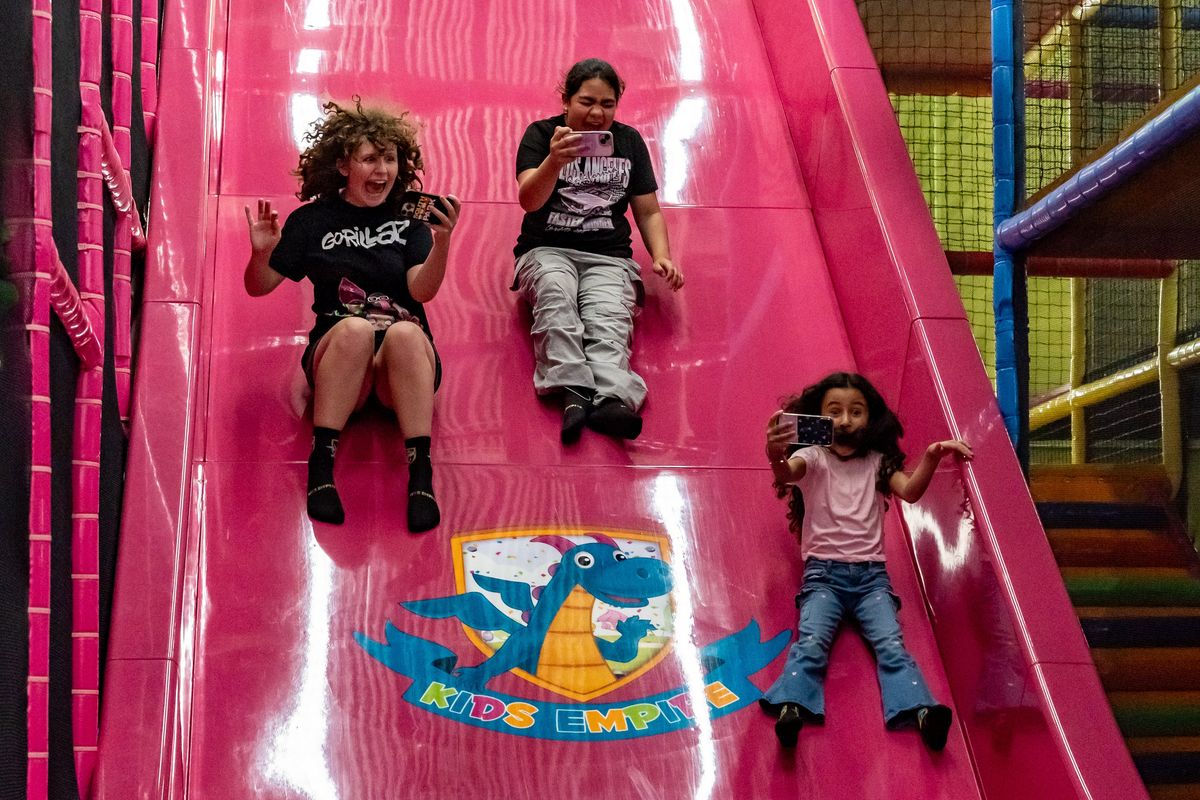Cassandra Trimnell was diagnosed with sickle cell anemia in 1987 when she was just a baby.
She inherited the gene that causes this disease from both of her parents, meaning she has sickle cell type SS. This means she can experience the worst symptoms — including fatigue, extreme joint pain, anemia, and infections — at a higher rate.
She's not the only one with sickle cell in her family either. Her younger sister Joanne was also born with it, and two of her other siblings have the trait, which means they don't have the disease but can pass it along to their children.
While she never had that shocking moment of hearing her diagnosis for the first time, she always knew she was different.
Cassandra as a child. Photo via Cassandra Trimnell.
When she started school, she had to constantly drink water and stay inside during recess when it was too hot or too cold to avoid pain episodes. Kids would occasionally ask her if she was contagious. It all made her feel incredibly isolated.
She was always a lot smaller and skinnier than the other kids at school, which meant that others often treated her like she was more fragile.
As a kid she also regularly felt sick and was in the hospital on a monthly basis. This often affected what she desperately wanted to do. For example, she was in a choir that was going on tour for which she had been planning and practicing for months. However, on the day they were supposed to leave, Trimnell was in the hospital.
Cassandra (left) with her sister Joanna. Photo via Cassandra Trimnell.
However, her mom was wonderful about helping her cope with the disease, and most importantly, she didn't treat her like she was going to break.
"You’re not like everybody else," Trimnell recalls her mom saying. "You need to look out for yourself. Look out for your health."
One aspect of sickle cell anemia that makes it such a difficult disease is that its symptoms aren't always visible to others.
"It’s like you’re fighting these invisible demons that nobody sees," Trimnell says. "Some of my earliest childhood memories are being hunched over in excruciating pain thinking I was going to die," she says.
This lack of visible "proof" that sickle cell disease is debilitating is one of the more frustrating aspects of living with it. You might see someone with sickle cell going through a pain crisis, but from the outside it just looks like they're playing a game on their phone. That's actually a coping method.
"We’re on our phones playing games because we’re distracting ourselves from the pain," Trimnell says.
Cassandra in the hospital with her husband. Photo via Cassandra Trimnell.
While it is the most common genetic condition around the world, it's rarer in the United States, which makes it even less visible.
And the current lack of understanding about symptoms and treatment among the general public can go from irritating to downright scary when someone with the disease goes to the hospital. Sometimes emergency room doctors don't believe sickle cell patients are in as much pain as they are because they seem to be handling it OK, which in turn affects their care.
"If doctors don’t think your pain is serious, then you won’t get treated seriously," Trimnell explains.
This is why Trimnell is now committed to raising sickle cell awareness.
Trimnell and members of Sickle Cell 101 at the 2017 Health and Resource Expo at Lincoln Elementary. Photo via Cassandra Trimnell.
She launched her nonprofit, Sickle Cell 101, in 2013. The idea came from a college biology course and an Instagram account.
When her biology class got around to talking about blood disorders like sickle cell, she was shocked by how unfamiliar her classmates were with it.
So she decided to get creative to give people a better understanding of the disease.
She began posting a number of facts on Instagram and received an overwhelming positive response.
#SickleCell red blood cells can squeeze through most blood vessels! #SickleCellEducation
A post shared by Sickle Cell 101 (@sicklecell101) on
Just like that, she was on the path to raising awareness full time. And today, her nonprofit specializes in educating the sickle cell community as well as the general public on various aspects of the disease.
The goal is to help people with the disease be treated with more mindfulness, especially if they're children, which is how Trimnell should've been treated when she was younger.
Trimnell knows she's not like everyone else, but now she realizes it's better to talk openly about her disease rather than hide it.
Cassandra (left) with her sister Joanne. Photo via Cassandra Trimnell.
When she was little, she didn't mention it to friends because she didn't want to be pitied or treated like a patient. Today, she's constantly sharing the challenges sickle cell patients face so that kids growing up with the disease remember they're not alone.
She sends the same message to parents who've recently found out their child has sickle cell anemia.
"People have sickle cell all over the world. You won’t lead a normal life, but it’s not a death sentence."
The best way to live with sickle cell disease is to stay healthy, positive, and turn to the support of groups like Sickle Cell 101 and Sickle Cell Warriors.
For those who don't have the disease, the best way to support those who do is to read up on it. The more people who understand it, the less isolated those living with it will feel.


 A handwritten note with the words "good job!" on it
A handwritten note with the words "good job!" on it A man smiling
A man smiling A dad with his kid on his shoulders
A dad with his kid on his shoulders Sandra’s granddaughter, E’s daughter, and another friend at an indoor park (July 2025)
Sandra’s granddaughter, E’s daughter, and another friend at an indoor park (July 2025) One of the ladies Sandra sponsored from Venezuela and her partner during Sandra’s first visit to meet her (December 2023)
One of the ladies Sandra sponsored from Venezuela and her partner during Sandra’s first visit to meet her (December 2023) Im Old Tv Shows GIF by PBS SoCal
Im Old Tv Shows GIF by PBS SoCal  Kelsey Grammer as Dr. Frasier Crane in 1996By US Treasury Dept. Public Domain
Kelsey Grammer as Dr. Frasier Crane in 1996By US Treasury Dept. Public Domain Get Out Birth GIF
Get Out Birth GIF  Season 8 Episode 24 GIF by Friends
Season 8 Episode 24 GIF by Friends  Max Greenfield Comedy GIF by CBS Giphy
Max Greenfield Comedy GIF by CBS Giphy  Season 1 Baby GIF by Outlander
Season 1 Baby GIF by Outlander